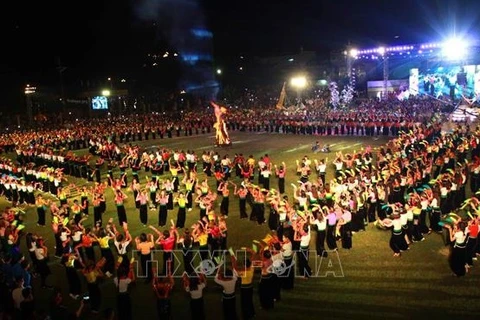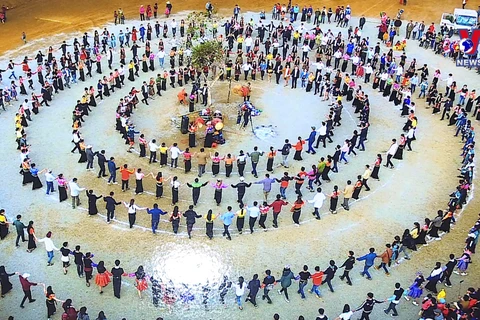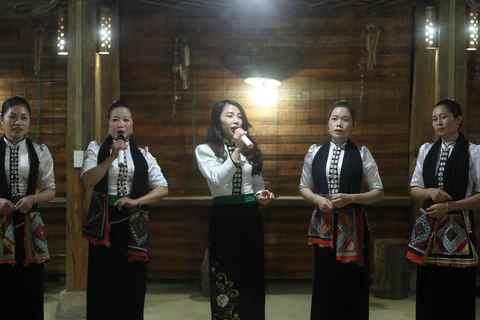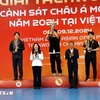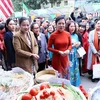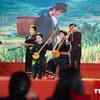Yen Bai (VNA) – The northern mountainous province of Yen Bai has completed its preparation to host a ceremony to receive the UNESCO's certificate recognising the art of Xoe dance of the Thai ethnic people as an Intangible Cultural Heritage of Humanity on September 24, according to Vice Chairwoman of the provincial People’s Committee Vu Thi Hien Hanh.
At a meeting on August 23 between leading officials of the Ministry of Culture, Sports and Tourism and the People’s Committees of Yen Bai, Dien Bien, Lai Chau and Son La provinces, she told participants the ceremony will be broadcast live on channels of the Vietnam Television (VTV) and those of several localities.
 Meeting between leading officials of the Ministry of Culture, Sports and Tourism and the People’s Committees of Yen Bai, Dien Bien, Lai Chau and Son La provinces (Photo: VNA) On September 24, the Muong Lo Culture and Tourism Week and the Mu Cang Chai Terraced Field Festival will be kicked off.
Meeting between leading officials of the Ministry of Culture, Sports and Tourism and the People’s Committees of Yen Bai, Dien Bien, Lai Chau and Son La provinces (Photo: VNA) On September 24, the Muong Lo Culture and Tourism Week and the Mu Cang Chai Terraced Field Festival will be kicked off.
The art was recognised by UNESCO as an Intangible Cultural Heritage of Humanity on December 15, 2021.
Xoe is a unique type of traditional dance associated with and plays a significant role in the daily life of Thai communities in the northwest of Vietnam, especially in the provinces of Lai Chau, Dien Bien, Son La and Yen Bai. It is performed in various community activities, from festivals to funeral rituals, as a symbol of hospitality./.
At a meeting on August 23 between leading officials of the Ministry of Culture, Sports and Tourism and the People’s Committees of Yen Bai, Dien Bien, Lai Chau and Son La provinces, she told participants the ceremony will be broadcast live on channels of the Vietnam Television (VTV) and those of several localities.
 Meeting between leading officials of the Ministry of Culture, Sports and Tourism and the People’s Committees of Yen Bai, Dien Bien, Lai Chau and Son La provinces (Photo: VNA)
Meeting between leading officials of the Ministry of Culture, Sports and Tourism and the People’s Committees of Yen Bai, Dien Bien, Lai Chau and Son La provinces (Photo: VNA) The art was recognised by UNESCO as an Intangible Cultural Heritage of Humanity on December 15, 2021.
Xoe is a unique type of traditional dance associated with and plays a significant role in the daily life of Thai communities in the northwest of Vietnam, especially in the provinces of Lai Chau, Dien Bien, Son La and Yen Bai. It is performed in various community activities, from festivals to funeral rituals, as a symbol of hospitality./.
VNA


